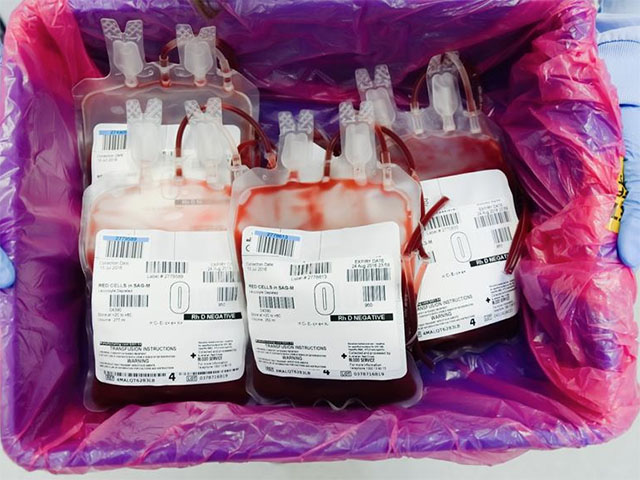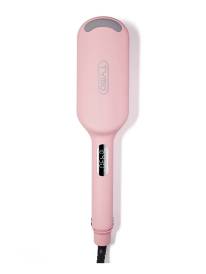Laura Dundovi Lifeblood donation

Laura Dundovic reveals medical condition that has made her a life saver; urges others with the disorder to give the gift of life
Model, TV presenter and former Miss Universe Australia Laura Dundovic has revealed she was just 16 when she was first diagnosed with haemochromatosis, a genetic condition which causes the body to store too much iron and is linked to cancer and organ damage if left untreated.
Laura is now urging the tens of thousands of Australians who live with the condition and who need to give blood as part of their medical treatment, to consider donating at an Australian Red Cross Lifeblood donor centre to save lives.
Her call comes as new research reveals 73,000 bags of blood taken from people with iron disorders at pathology and GP services are discarded each year. Many of these patients could instead donate at a Lifeblood donor centre and their blood could be used to save lives.
The Royal Australian College of General Practitioners and Haemochromatosis Australia are also encouraging people with haemochromatosis to speak to their GP about donating at a Lifeblood donor centre.
The primary treatment for haemochromatosis to reduce high levels of iron is the removal of blood, which is typically done every 12 weeks.
However, new Lifeblood research reveals that many aren't aware their blood can be used to save lives, a misconception that could be preventing donations.
Laura said not only does donating blood save her own life it has the potential to save up to three other lives each time she donates.
"If you don't know or manage your haaemochromotasis it can be fatal. We have a family history of members dying from illnesses we now know were probably caused by haemochromatosis, as I was the first one to be diagnosed with it" she said
"I think the main reason why people with haemochromatosis don't donate their blood is miseducation. Lots of people are told their blood isn't useable when in fact it is," she said.
"Donating blood saves my life… and it's an easy way to give back that your body will thank you for," she said.
Australian Red Cross Lifeblood researcher Dr Peter Bentley said greater awareness among GPs and people living with haemochromatosis would lead to many more people like Laura saving lives.
"Unlike many other chronic health problems, this condition has had a positive spin-off for others, and people with the condition have the potential to contribute greatly to the blood supply as they often need to give blood frequently," Dr Peter Bentley said.
"People with haemochromatosis make up 2.5 per cent of the Australian blood donor panel, with 15,000 donors already making 37,000 donations every year at Lifeblood donor centres.
Lifeblood surveyed 4,000 people with the condition who had previously donated blood to Lifeblood to understand barriers to donating at Lifeblood and why they choose to access treatment where they do.
"Almost 90 per cent of donations from people with this condition are useable, however around 40 per cent of people we surveyed didn't know their blood could be used to save lives," Lifeblood spokesperson Dr Bentley said.
"We know that not everyone will be eligible to donate, or it may not be convenient if people don't live close to a donor centre, but we believe that even if some of those 73,000 bags of discarded blood, were donated at a Lifeblood centre, it would make a significant difference to the nation's blood supplies and the lives of patients across Australia at a time of record high demand."
In 1988, Australia became one of the first countries in the world to accept blood donations from people with haemochromatosis. Lifeblood also recently moved to test iron levels in first time donors, picking up people with both very high, and very low iron, including those potentially with Hemochromatosis.
And in 2022, Lifeblood became the first blood service in the world to accept plasma donations for people with haemochromatosis, which can be made in between their regular blood donations.
"Enabling the group to make plasma donations was a world-leading initiative," said Haemochromatosis Australia spokesperson (and patient/blood donor) Matthew Howie.
"This group are predominantly men over 40, who make perfect plasma donors, as they often have good veins and high blood volume.
"What this means is that instead of being treated as haemochromatosis patients, this valuable group of donors, who are some of the nation's most reliable, are treated as lifesaving blood donors."
Donations from people with haemochromatosis currently save up to 111,000 lives a year, and with greater awareness Lifeblood believes they could save tens of thousands more.
Haemochromatosis Australia currently tracks the number of donations made and lives saved by haemochromatosis patients, which go towards a national tally as part of Lifeblood Teams.
"We initiated this team to make sure those who are new to donating blood at Lifeblood don't feel alone and rather part of something bigger – that together we can make a huge contribution," said Matthew.
.To donate, please call 13 14 95 or visit donate.blood.com.au. Those with haemochromatosis should seek a referral from their GP to their local Lifeblood donor centre using Lifeblood's High Ferritin App.
To make a donation, call 13 14 95, book online at lifeblood.com.au.
MORE





